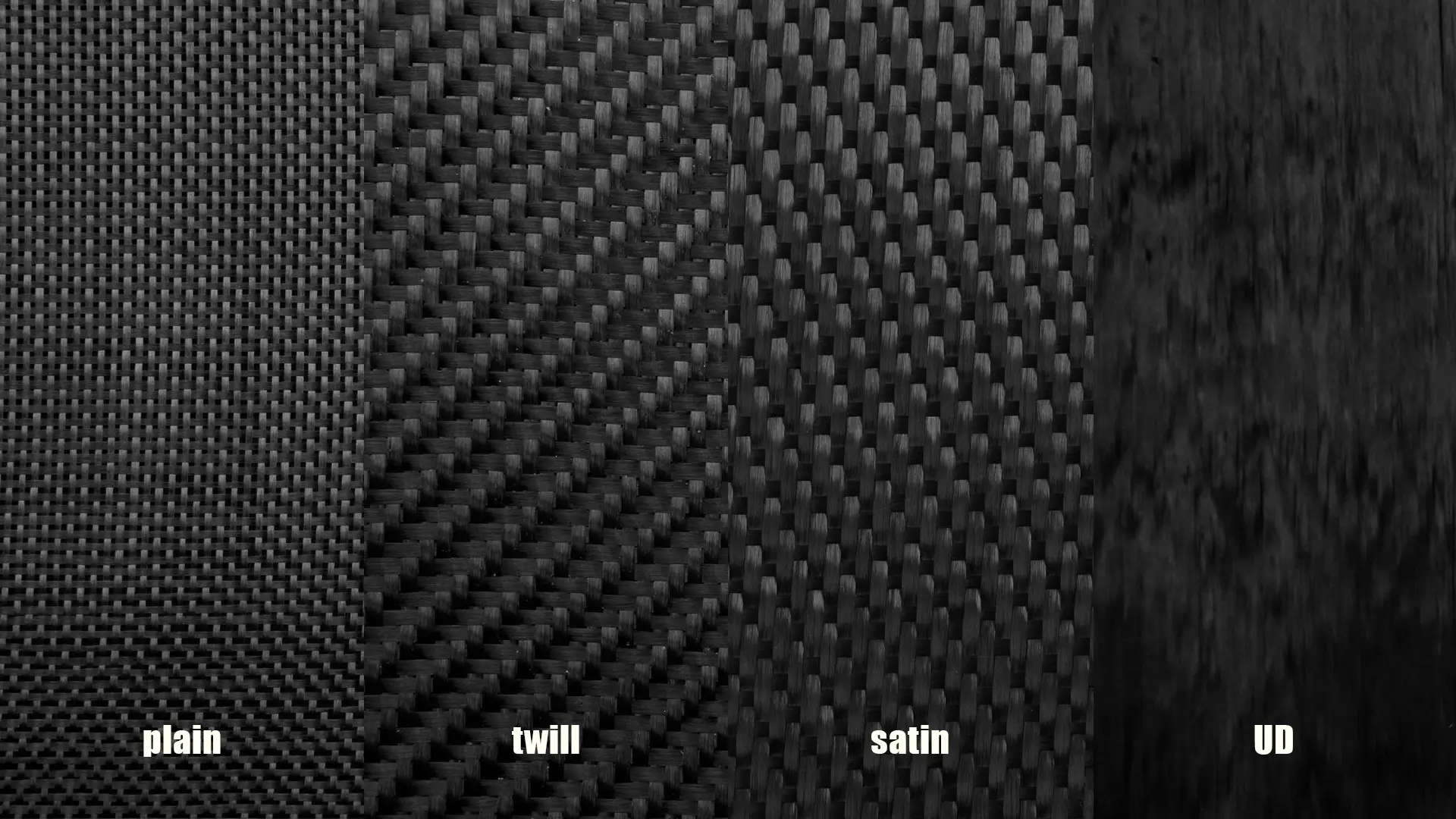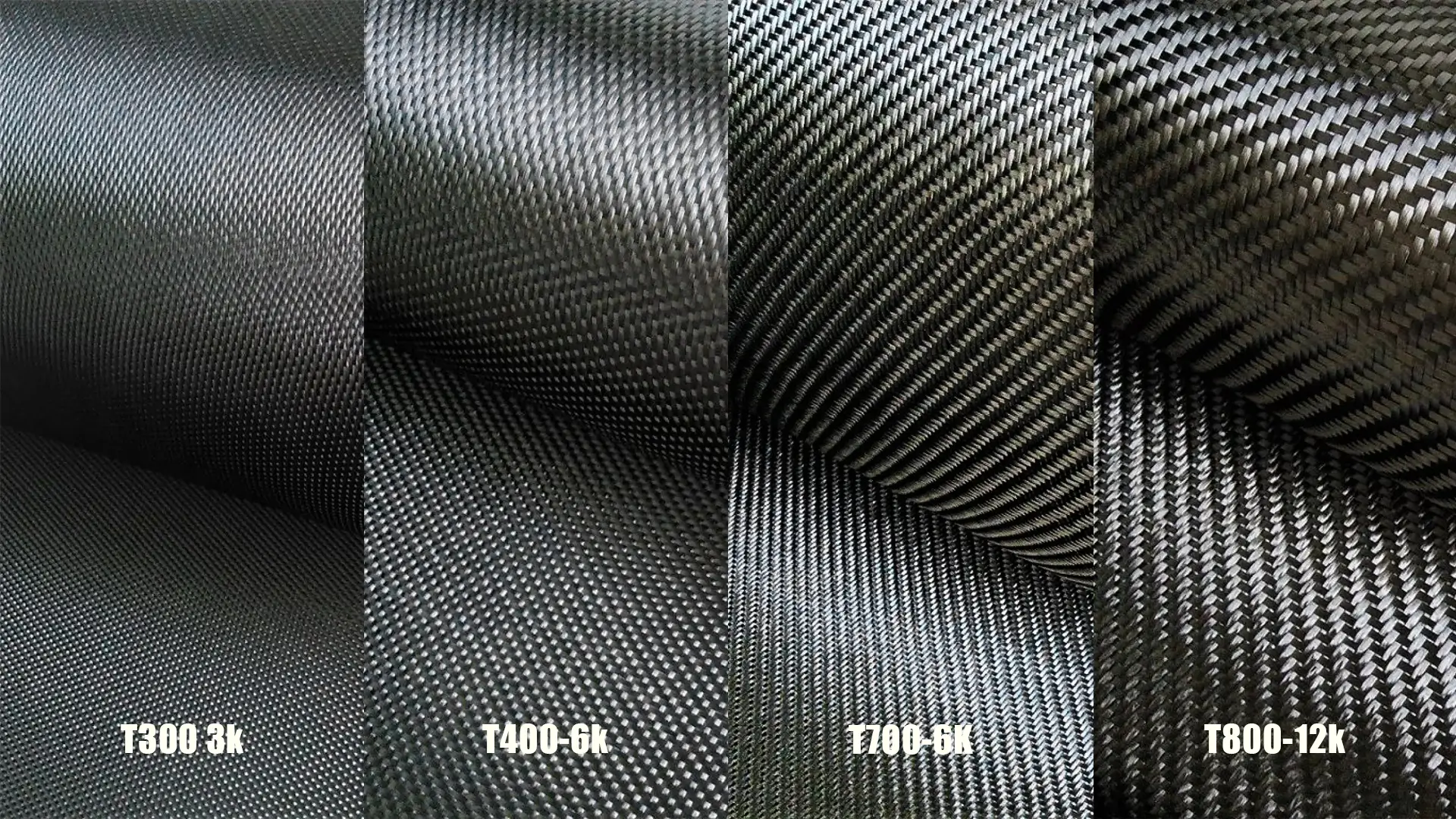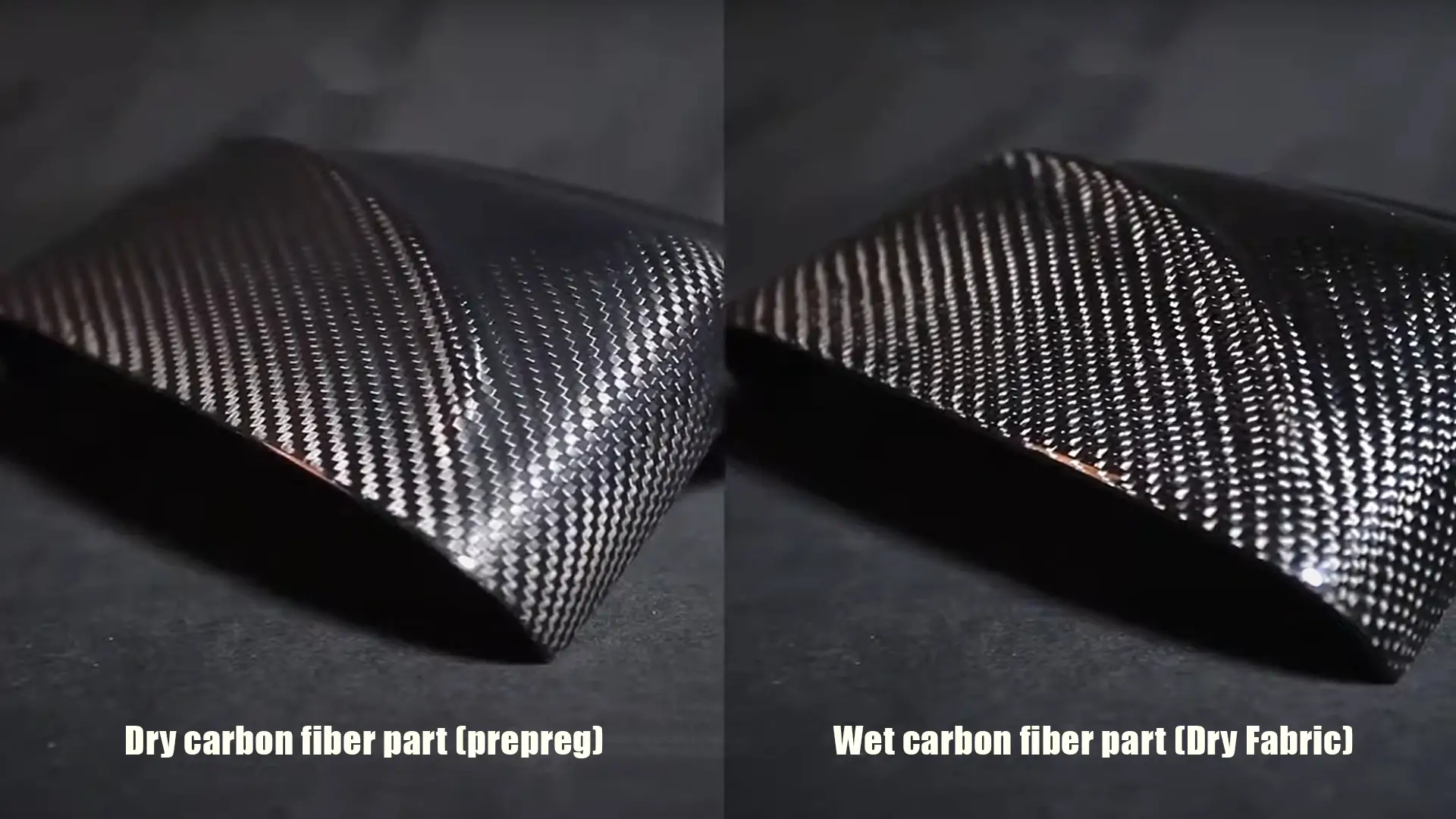What Is Carbon Fiber Tow?
Custom carbon fiber tow refers to a bundle of continuous carbon filaments. The number before the “K” represents how many thousands of filaments are grouped together. For instance, 1K tow has 1,000 carbon filaments, 3K tow has 3,000, and so on.
In the context of a custom carbon fiber part, tow size is a key consideration because it influences the physical properties, aesthetics, and processing behavior of the part.
Common Carbon Fiber Tow Sizes and Their Characteristics
| Tow Size | Filament Count | Common Fabric Weight (g/m²) | Surface Appearance | Features | Typical Applications | Cost Level |
|---|---|---|---|---|---|---|
| 1K | 1,000 | 90–120 | Very fine and delicate | Ultra-light, premium texture, difficult to weave, highest cost | High-end sports gear, drones, scale models, photography rigs | ★★★★★ |
| 3K | 3,000 | 200–240 | Smooth, industrial | Balanced performance and aesthetics, industry standard, cost-effective | Car and motorcycle shells, bicycle frames | ★★★★☆ |
| 6K | 6,000 | 300–400 | Slightly coarse | Higher stiffness than 3K, moderately heavier | Mechanical components, reinforcement ribs | ★★★☆☆ |
| 12K | 12,000 | 400–600 | Noticeably coarse | High strength, lower cost, fast weaving | Aerospace structures, construction reinforcement, carbon beams | ★★☆☆☆ |
| 24K | 24,000 | 600–800+ | Coarse texture | Very strong, ideal for large-surface reinforcement | Bridges, wind turbine blades, precast panels | ★☆☆☆☆ |
| 48K+ | 48,000–60,000+ | 800+ | Very coarse, industrial | Industrial-grade, ultra-high strength, mainly for infrastructure | Civil engineering, structural retrofits, large-scale composites | ★☆☆☆☆ |
Custom Carbon Fiber Tow Selection: Core Considerations
1. Application Purpose
The first step in choosing a custom carbon fiber tow is identifying the purpose of the part.
- For aesthetic parts such as dashboards or laptop cases, 1K and 3K tow are most popular due to their clean appearance.
- For functional, structural parts like brackets or car chassis, 6K or 12K are more appropriate.
- For large-scale industrial applications, such as wind turbine blades, 24K or larger is usually chosen.
2. Visual Expectations
Many customers want a specific visual appearance from their custom carbon fiber part. The smaller the tow, the more elegant and detailed the weave will appear.
- 1K has the most refined surface but is expensive and harder to work with.
- 3K provides a classic “carbon fiber look” and is easier to lay and cure.
- 12K and above create a more aggressive texture, often used in applications where visual finesse is not critical.
3. Structural Requirements
Tow size directly affects the thickness and strength of the carbon fiber fabric. A higher filament count (like 12K or 24K) allows fewer layers to achieve the desired thickness, potentially reducing layup time. However, these larger tows may reduce flexibility and increase risk of voids during curing.
- Use lower tow sizes (1K, 3K) for parts requiring high conformity to curves.
- Use higher tow sizes (12K, 24K) when strength and volume are more critical than shaping ability.
When selecting carbon fiber tow, it’s important to find the right balance between strength, weight, and flexibility. In many cases, a combination of different filament counts or tow sizes is used to optimize performance across the entire part. For example: A high-strength section of the part might use 6k or 12k tows, while a more flexible area could use 1k or 3k tows.
4. Weave Compatibility
Different tow sizes are often paired with specific weave types. The most common weaves are plain (1×1), twill (2×2), and satin (4×4).
| Weave Type | Common Tow Match | Features | Applications |
|---|---|---|---|
| Plain (1×1) | 1K, 3K | Tightest weave, low drape | Flat surfaces, stiff parts |
| Twill (2×2) | 3K, 6K | Balanced strength and flex | Car parts, general usage |
| Satin (4×4) | 6K, 12K | High drape, soft appearance | Curved panels, decorative |
Making the Right Choice for Your Custom Carbon Fiber Tow
When ordering a custom carbon fiber part, selecting the correct tow depends on the following balance:
- Aesthetic priority? Go with 1K or 3K.
- Strength and function? Consider 6K, 12K, or even 24K.
- Budget constraints? 3K and 6K typically offer the best compromise.
Communicate clearly with your manufacturer about the intended use. A good supplier will recommend a tow size based on their experience and your project requirements.

FAQ About Custom Carbon Fiber Tow
“Can I use 12K to save cost for small parts?”
Technically yes, but the coarse texture and reduced drapability can affect moldability and surface quality. For small detailed parts, we usually recommend 3K.
“Is 1K stronger than 3K?”
Not necessarily. Strength is determined by the fiber grade (like T300/T700) and part design. 1K is thinner and offers better drape, but more layers are needed.
“Can I mix different tows in one part?”
Advanced manufacturers can use hybrid layers (e.g., 3K outside, 12K core) to balance cost, strength, and aesthetics, but this requires detailed engineering.
“What tow is most cost-effective for custom carbon fiber parts?“
3K is the best balance of price, performance, and appearance. For large structural parts, 12K or 24K is more economical.
“How do I know which tow was used in my part?“
You can tell by surface texture, but for accuracy, ask your supplier or request a materials spec sheet.
Advice on Choosing Custom Carbon Fiber Tow
Choosing the right custom carbon fiber tow is not about picking the most expensive or most popular option—it’s about matching the tow size to your project’s specific goals. If you’re unsure, consult your carbon fiber part supplier with as much context as possible: size, strength requirements, visual expectations, and budget.
At our factory, we assist customers from design to fabrication, helping select the ideal tow for their unique part. Whether it’s a sleek car dashboard, a lightweight drone arm, or an industrial machine bracket, the right carbon fiber tow will elevate your part’s performance and finish.
Final Thoughts
As composite material experts, we are willing to provide you with critical assistance. The correct judgment now avoids cost overruns, delays, and disappointing results later.
Need advice on your custom carbon fiber part? Reach out to our team for expert guidance.




